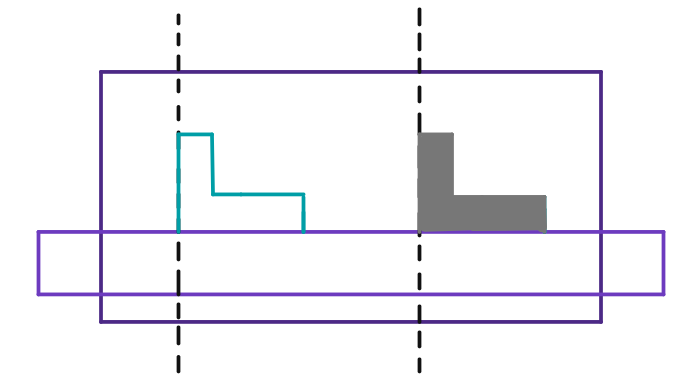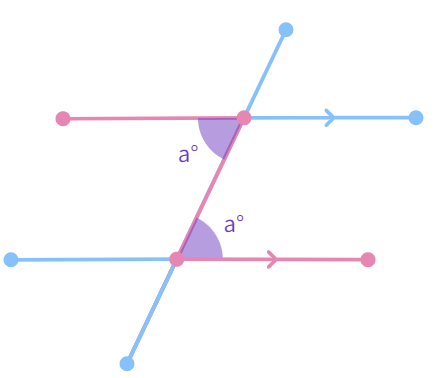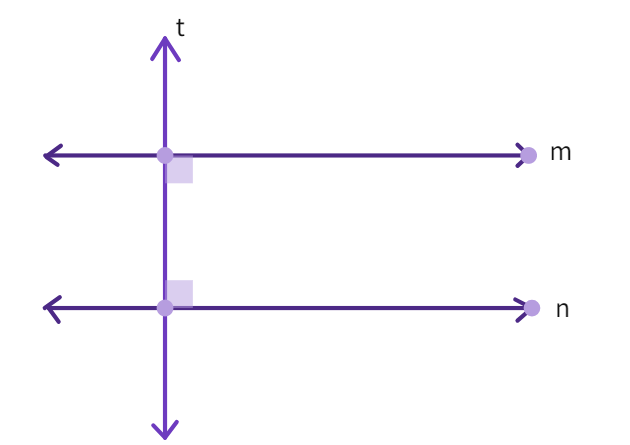Checking For Parallel Lines
We have seen that if two lines are parallel, then a transversal line gives rise to pairs of equal corresponding angles, equal alternate interior angles and interior angles on the same side of the transversal being supplementary i.e. sum of angles measures being
Now, when two lines are given, is there a method to check if they are parallel or not? This skill is needed in many life-oriented situations.

A draftsman uses a carpenter’s square and a straight edge (ruler) to draw these segments (above figure). He claims they are parallel. How? Are you able to see that he has kept the corresponding angles to be equal? (What is the transversal here?)
Thus, when a transversal cuts two lines, such that pairs of orresponding angles are equal, then the lines have to be parallel.

Look at the letter
When a transversal cuts two lines, such that pairs of alternate interior angles are equal, the lines have to be parallel.

Draw a line l. Draw a line m, perpendicular to l. Again draw a line p, such that p is perpendicular to m. Thus, p is perpendicular to a perpendicular to l. You find p || l. How? Because ∠1 + ∠2 =
Thus, when a transversal cuts two lines, such that pairs of interior angles on the same side of the transversal are supplementary, the lines have to be parallel.
a
Is l || m? Why?
l || m. This is because the corresponding angles are equal (both are 50°). When corresponding angles are equal, the lines are parallel.
b
Is l || m? Why?
l || m. This is because the alternate interior angles are equal (one is 50° and the other is 130°). When alternate interior angles are equal, the lines are parallel.
c
Is l || m what? is ∠x
Since l || m and the given angle is 70°,∠x is also
